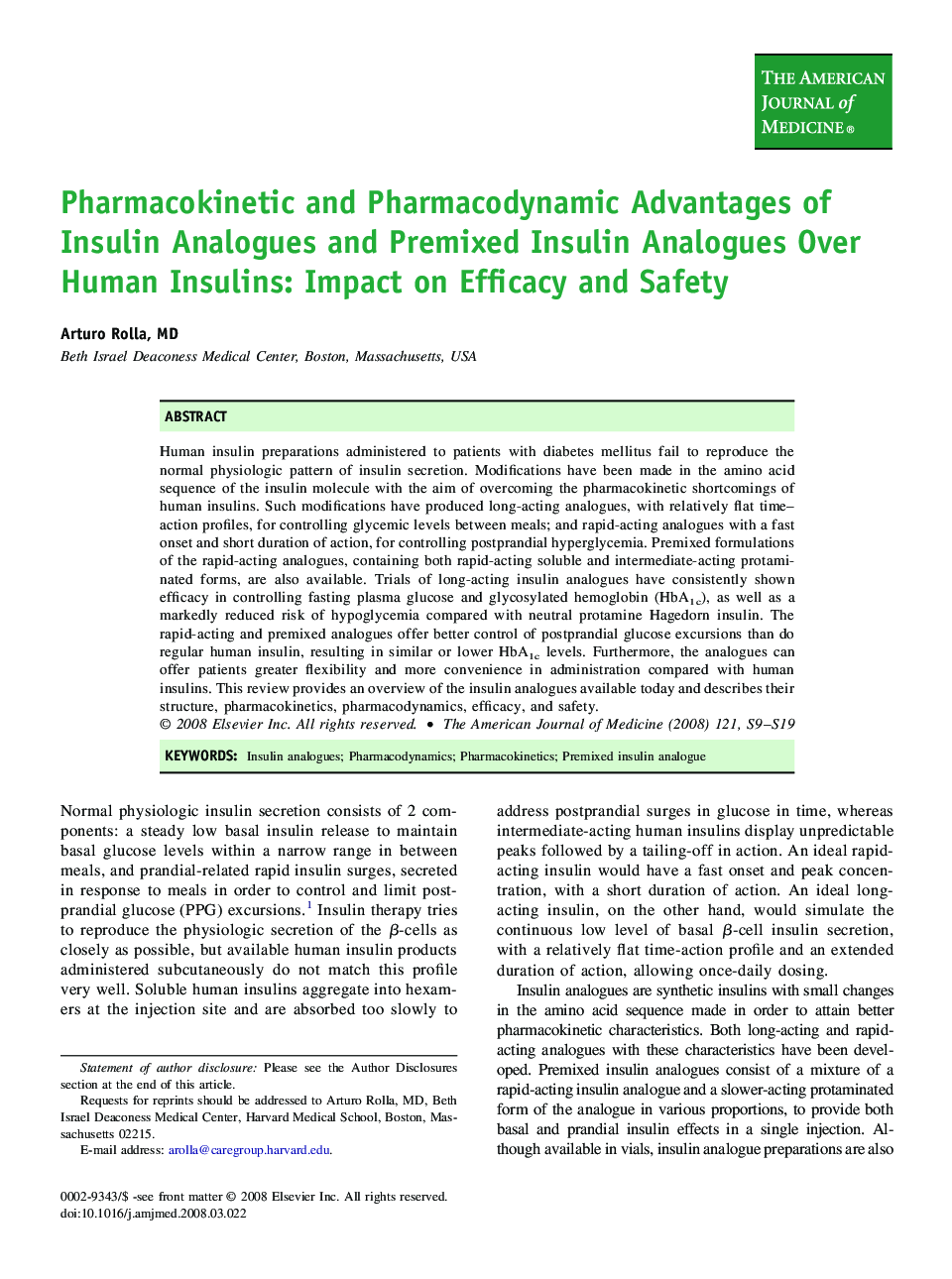| کد مقاله | کد نشریه | سال انتشار | مقاله انگلیسی | نسخه تمام متن |
|---|---|---|---|---|
| 2725836 | 1566239 | 2008 | 11 صفحه PDF | دانلود رایگان |

Human insulin preparations administered to patients with diabetes mellitus fail to reproduce the normal physiologic pattern of insulin secretion. Modifications have been made in the amino acid sequence of the insulin molecule with the aim of overcoming the pharmacokinetic shortcomings of human insulins. Such modifications have produced long-acting analogues, with relatively flat time–action profiles, for controlling glycemic levels between meals; and rapid-acting analogues with a fast onset and short duration of action, for controlling postprandial hyperglycemia. Premixed formulations of the rapid-acting analogues, containing both rapid-acting soluble and intermediate-acting protaminated forms, are also available. Trials of long-acting insulin analogues have consistently shown efficacy in controlling fasting plasma glucose and glycosylated hemoglobin (HbA1c), as well as a markedly reduced risk of hypoglycemia compared with neutral protamine Hagedorn insulin. The rapid-acting and premixed analogues offer better control of postprandial glucose excursions than do regular human insulin, resulting in similar or lower HbA1c levels. Furthermore, the analogues can offer patients greater flexibility and more convenience in administration compared with human insulins. This review provides an overview of the insulin analogues available today and describes their structure, pharmacokinetics, pharmacodynamics, efficacy, and safety.
Journal: The American Journal of Medicine - Volume 121, Issue 6, Supplement, June 2008, Pages S9–S19